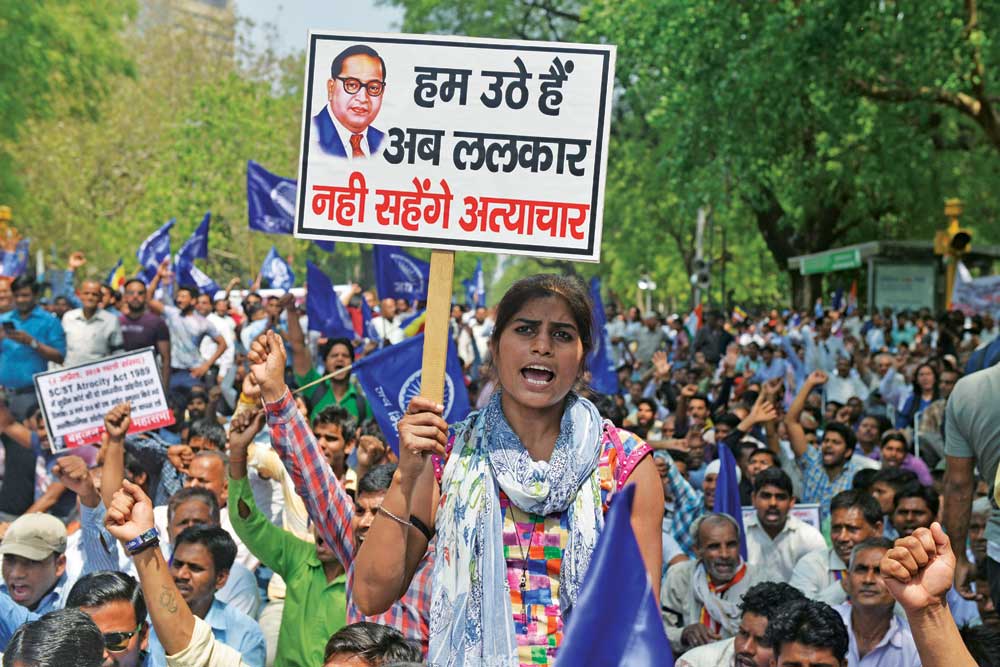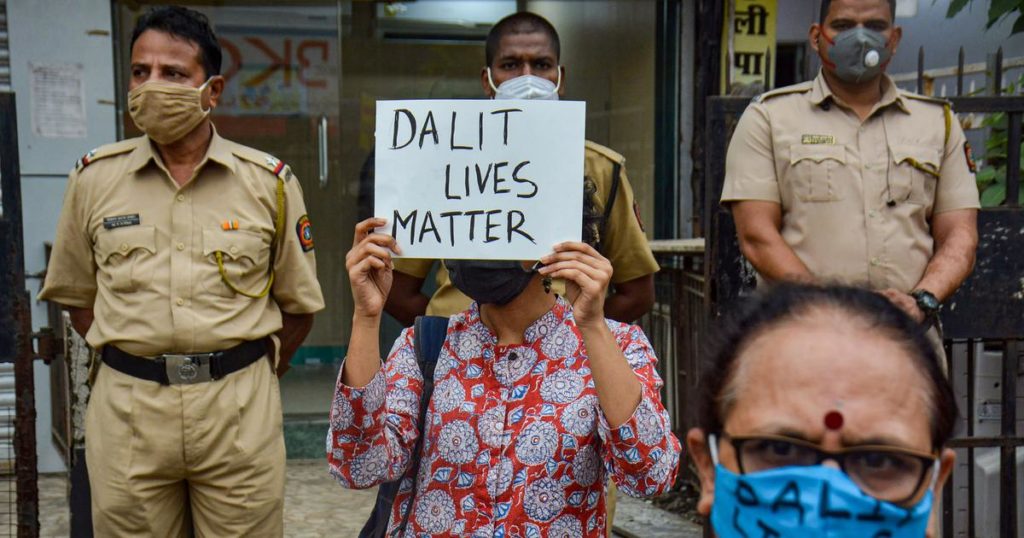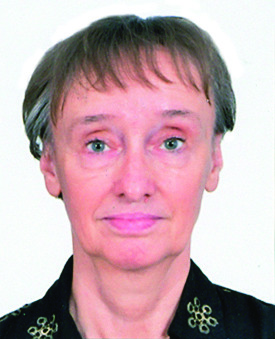Since Dalits are excluded from the four-fold varna system of Hinduism and are seen as “Avarna”, they are examined separately. Dalit (meaning broken, shattered in Sanskrit) is a name for people who used to belong to the lowest jatis (occupational castes) in India. They are called “untouchables” because they are considered impure in the religious understanding and physical touching or social intercourse with Dalits is supposed to pollute the caste purity of a Hindu person. Another term for Dalits, created and promoted by Mahatma Gandhi. Is Harijan. Hari is another name of the Hindu god Krishna and Gandhi was trying to include the Dalits into the devotees of Krishna.
Economist, politician and social reformer B. R. Ambedkar (1891–1956), himself from a Dalit background, and commonly known as Babasaheb, said that untouchability came into Indian society around 400 AD, due to the struggle for supremacy between Buddhism and the overwhelming power of Brahmins, called Brahmanism. Ambedkar, who served as India’s first Law and Justice Minister and considered the Chief Architect of India’s Constitution, just before his death led a mass conversion of Dalits into Buddhism.
India is home to over 200 million Dalits, the Dalit community being not only larger than any of the Hindu varnas, but also larger than the Muslim community in India. They live in all over India, usually separate mohallas at the outskirts of villages and towns. Dalit communities comprises 16.6% of the country’s population, according to the 2011 Census of India. Uttar Pradesh (21%), West Bengal (11%), Bihar (8%) and Tamil Nadu (7%) account for almost half the country’s total Dalit population. Their percentage is lowest in north-east India because the indigenous population there are not Hindus and don’t follow the caste system. Bengali immigrants have introduced a small number of Dalits into their society. Similar groups are found throughout the rest of the Indian subcontinent; less than 2% of Pakistan’s population is Hindu, 70–75% are Dalits. Bangladesh had 5 million Dalits in 2010, the majority being landless and in chronic poverty.

Dalits are very much divided among themselves into different jatis depending on the occupation they are practicing. There are also social differences between different groups of Dalits, some consider themselves socially above others. Dalits in India continue to work as sanitation workers: manual scavengers, cleaners of drains, garbage collectors, and sweepers of roads. Other occupations are leather workers, tanners, flayers, cobblers, agricultural labourers and drum beaters.
Though the varna system, introduced to India by Aryan nomadic immigrants, is absent in the Vedas, the idea of purity and impurity was already present there. It was later used by the Brahmins to support and perpetuate their rule. In the process, the indigenous non-Aryan population (often tribal people with dark skin) were not included into the varna system and over the centuries became untouchable. That meant varna Hindus were not allowed to physically contact them, to take food prepared by them, accept water from them. The idea that leather shoes are impure (even when not muddy) comes from the idea that leather, the skin of the cow and the worker who have produced the shoes are impure as well. So throwing shoes at each other to express disregard or even revulsion comes from this chapter of Hinduism and is practiced in Islamic Pakistan without a thought. Other habits like keeping a separate glass for workers coming to the house or for servants originate also in the Hindu idea of purity/impurity.
The idea and social reality of untouchability as much as inequality of men was first criticized by both Buddhism and Jainism. Abrahamic religions like Islam and Christianity in principle also reject inequality of men but in the subcontinent the idea has been corrupted by Hindu influence. When the British came to India, they started criticizing untouchability, Sati (widow burning), child marriage and other social customs. This initiated a self-critical view among Hindus and Hindu reform movements like the Brahmo Samaj and other proponents of the Bengali Renaissance in the 19th century that rejected the caste system but when it came to getting their own daughters married, they had to accept it. So, social reform was not successful in this regard.
Another problem was the electoral system that introduced the idea of majority vote. Upper-varna Hindus had to decide how to manage their votes. Normally they would not have considered Dalits Hindus. But with the need to secure a majority for their election, they understood that leaving out the large number of Dalits would make their election campaigns much more difficult. Thus, it was Mahatma Gandhi who promoted the idea of including Dalits into the Hindu fold (by calling them Harijan) which would secure Hindus a stable majority. In 1932, the British Raj in the Communal Award recommended separate electorates and introduced reserved seats for Dalits. This was favoured by the Dalit leader Ambedkar but Mahatma Gandhi opposed the proposal because it would be to the detriment of Hindu numbers. The Government of India Act, 1935 then introduced the reservation of seats for the Depressed Classes, now renamed as “Scheduled Castes” in India.

In independent India caste-based discrimination is prohibited and untouchability abolished by the Constitution of India. Soon after that India introduced a reservation system to enhance the ability of Dalits to have political representation and to obtain government jobs and education. Now renamed as “Scheduled castes” Dalits have reserved seats in educational institutions and for government jobs. While in principle this has opened up the possibility of Dalits to get education and a job it has only minimally reduced discrimination. Forced by the circumstance of their birth and poverty, Dalits in India continue to work as sanitation workers and in other “impure” jobs. As of 2019, an estimated 40 to 60% of the 6 million Dalit households continue to be engaged in sanitation and other like jobs. Even those who make it to universities and good jobs have to fight against discrimination. A learned judge of the Allahabad High Court had his chambers “purified” with the sacred water from the River Ganges, because they had earlier been occupied by a Dalit judge. The question asked about the number and/or percentage of Dalits in the Indian Armed Forces will get an evasive reply, contrary to what is proclaimed only high-class pure-blooded Indians allowed into the Indian Army. The number of Dalits in the army could well be close to ZERO if not ZERO.
Dalit is a social status more than a religion. There is no record of religious beliefs among those Dalits who have not converted. Given their dismal social position they are not allowed to practice mainstream Hindu religion, they were prevented from entering temples and attend religious ceremonies. Most are illiterate and have no access to religious books and scriptures. They surely do have religious beliefs and follow some rituals but those have not been recorded. Due to the lack of proper recognition in the mainstream of Hindu religion, Dalits have been adopting religions such as Islam, Christianity and Buddhism but despite of that they remain socially deprived. In a 113-page joint report in 2007 “Hidden apartheid, anti-discrimination against India’s untouchables”, the Center for Human Rights and Global Justice said that 16.5 million Dalits in India are condemned to a lifetime of abuse simply because of their (non)caste. In fact, Indian PM Manmohan Singh called “untouchability a “blot on humanity”. Caste-related killings, rapes and other abuses are a daily occurrence in India, a 2005 got report said a crime against Dalits is committed every 20 minutes. In 2007, an EU Parliament Resolution found India’s efforts to enforce laws protecting Dalits to be “grossly inadequate”.
Contributed by:

Dr. Bettina Robotka, former Professor of South Asian Studies, Humboldt University, Berlin, Editor of the Defence Journal and a Consultant to the Pathfinder Group.






You choose peace or war?